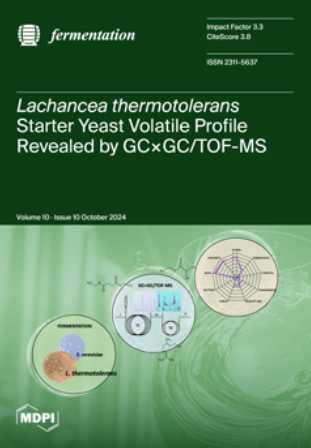Optimization of Biomass Cultivation from Tuber borchii and Effect of Additives on Triterpenoid Production
IF 3.3
3区 农林科学
Q2 BIOTECHNOLOGY & APPLIED MICROBIOLOGY
引用次数: 0
Abstract
Edible fungi are renowned for producing biologically active secondary metabolites that possess anti-tumor activity, protect the liver and have other benefits. The cultivation of truffle mycelia through submerged fermentation has gained interest in the production of metabolites for bio-medicinal purposes. In the present study, Tuber borchii was cultivated by submerged fermentation to produce both biomass and triterpenoids. Various additives, including palmitic acid, stearic acid, linoleic acid, chitosan, CaCl2 and limonene, were investigated to enhance triterpenoid production. It was observed that increasing the medium’s linoleic acid concentration to 1 g/L increased the production of triterpenoids to 129.29 ± 6.5 mg/L, which was 2.94 times higher than the control. A number of variables, including potassium and magnesium ion concentrations and carbon and nitrogen sources and concentrations, were considered to ascertain the ideal conditions for T. borchii growth in submerged fermentation. The best concentrations for glucose, yeast extract, peptone, malt extract, KH2PO4 and MgSO4·7H2O in submerged fermentation were 19.45, 4.58, 7.91, 5.3, 0.58 and 0.82 g/L, respectively, according to response surface methodology. Validation analysis revealed that the experimental values and the predicted values were in good agreement. Under ideal circumstances, the maximum dry cell weight (2.980.18 g/L), which was 1.39 times greater than the control, was attained. Finally, the addition of 1.5 g/L linoleic acid on day 14 to the optimal medium elevated the triterpenoid production to 212.63 ± 16.58 mg/L, which was a 4.84-fold increase compared to the control.硼砂块茎生物量培养的优化及添加剂对三萜产量的影响
食用菌以产生具有生物活性的次级代谢产物而闻名,这些次级代谢产物具有抗肿瘤活性、保护肝脏和其他益处。通过深层发酵培养松露菌丝体在生产用于生物医药目的的代谢产物方面引起了人们的兴趣。在本研究中,通过深层发酵培养Tuber borchii,以生产生物质和三萜类化合物。研究了各种添加剂,包括棕榈酸、硬脂酸、亚油酸、壳聚糖、CaCl2和柠檬烯,以提高三萜的产量。结果表明,将培养基的亚油酸浓度提高到1g/L,三萜类化合物的产量增加到129.29±6.5mg/L,是对照的2.94倍。考虑了许多变量,包括钾和镁离子浓度以及碳和氮的来源和浓度,以确定T.borchii在深层发酵中生长的理想条件。根据响应面法,葡萄糖、酵母提取物、蛋白胨、麦芽提取物、KH2PO4和MgSO4·7H2O在深层发酵中的最佳浓度分别为19.45、4.58、7.91、5.3、0.58和0.82g/L。验证分析表明,实验值与预测值吻合较好。在理想条件下,获得了最大干细胞重量(2.980.18g/L),是对照的1.39倍。最后,在第14天,在最佳培养基中加入1.5g/L的亚油酸,三萜类化合物的产量提高到212.63±16.58mg/L,与对照相比增加了4.84倍。
本文章由计算机程序翻译,如有差异,请以英文原文为准。
求助全文
约1分钟内获得全文
求助全文
来源期刊

Fermentation-Basel
BIOTECHNOLOGY & APPLIED MICROBIOLOGY-
CiteScore
3.80
自引率
18.90%
发文量
594
审稿时长
7 weeks
期刊介绍:
Fermentation-Basel is an international open access journal published by MDPI, focusing on fermentation-related research, including new and emerging products, processes and technologies, such as biopharmaceuticals and biotech drugs. The journal enjoys a good reputation in the academic community and provides a high-impact forum for researchers in the field of bioengineering and applied microbiology.
 求助内容:
求助内容: 应助结果提醒方式:
应助结果提醒方式:


